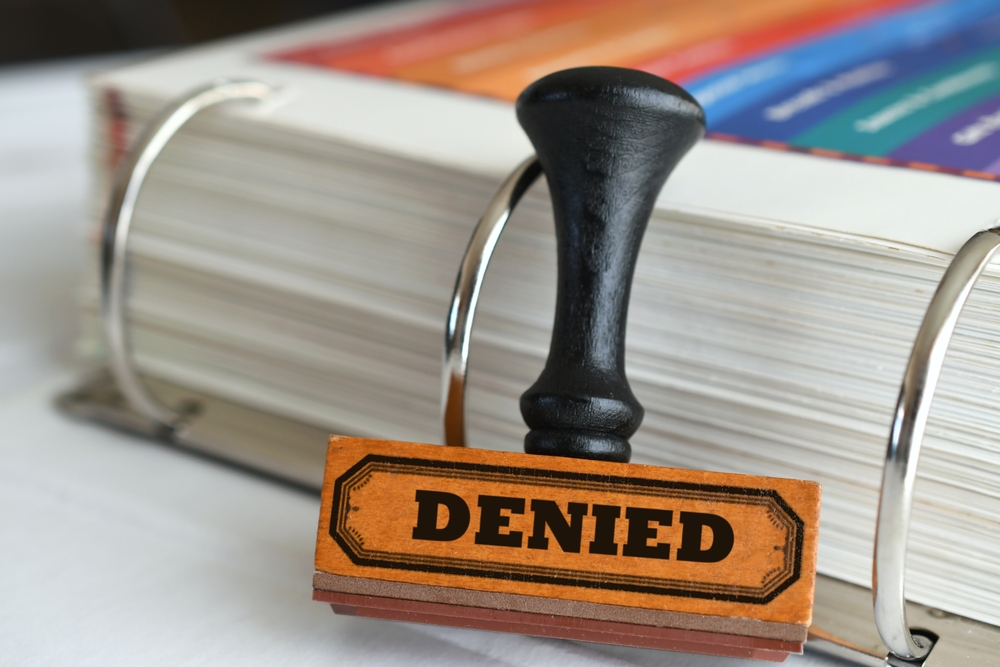Here’s another guest blog from Michael Crouch who is a professional coder and medical auditor, detailing the documentation demands of the LCDs. It’s true that we don’t know if the LCDs will be implemented on April 13th. However, with or without the implementation demands of the LCDs, Medicare audits will continue to target the use of CTPs/Skin subs. The documentation requirements are so daunting there is no way that a “smart phrase” in the procedure note will suffice.
Here’s why a template inside the chart – and even a checklist – will not suffice to meet the requirements of the LCD:
Your clinical record must substantiate whatever you say in your template.
- For example, if you state that consistent compression of >20 mmHg was provided to a venous leg ulcer, but you never made note of any compression being applied during the 4 week “Standard of Care (SOC)” period, then you are making statements in your templated procedure note which appear to be false, based on the totality of the medical record.
- There are more than 25 specific elements which need to be substantiated in the chart, including things like the name of the practitioner treating the condition that is “etiologic” for the ulcer, a nutritional assessment/management, a review of all the patient’s medications, and a review of their major underlying medical problems. (That’s only a partial list of the things the chart needs to contain.) All those things need to be documented somewhere other than a templated procedure note.
You need to do math.
- At least for diabetic foot ulcers, you will have to calculate the percent area reduction over the SOC period to ensure that it is not 50% or less.
- You must demonstrate that the ulcer is getting better in response to treatment with CTPs/skin subs, either by a change in the measurements or by the development of granulation tissue and/or epithelial tissue.
You need to read the “instructions for use” (IFUs) for all the approved products.
- If you document that muscle, tendon or bone are exposed, then you need to read the IFU of the specific product you intend to use to ensure that it is appropriate for deep ulcerations.
You need a calendar (and more math)
- You must make sure that that the date of any given CTP/skin sub application is not more than 16 weeks from the initial application.
- You must keep track of the number of applications – likely to more than one ulcer (since most patients have at least two ulcer and the CTP applications might not have started on the same day).
You need a comprehensive treatment plan somewhere in the chart.
You need very specific ulcer documentation at each visit – starting at least a month before the first CTP/skin sub application.
- You need to ensure that measurements and ulcer descriptions are documented in the chart quite separate from the procedure note itself.
- The ulcer characteristics must be recorded at each visit for the 4-week SOC period, well before the first CTP/skin sub application.
A “smart phrase” in the EHR might help to get the needed elements in the procedure note but will not be sufficient to address all the elements needed in the chart. And it does not seem likely that even the most complete “list” will work either because the (very long) list needs to be used on every DFU and VLU visit – since you need to consider every DFU and VLU visit to be in the “SOC period” in case you later decide to use a Cellular Tissue Product / skin substitute.
Here’s a guest blog by Michael Crouch reviewing the LCD requirements. The LCDs if implemented, will represent a massive increase in documentation requirements no matter how you decide to approach it.
–Caroline
Dr. Fife –
As a professional coder and medical auditor providing consulting services to the wound management industry, I offer documentation and billing guidance to my clients. This guidance comes in the form of detailed guidelines as well as an abbreviated documentation checklist that serves as a quick reference for the provider responsible for recording services provided on that date of service. One of those wound management-related services involves the application of skin substitute grafts (SSGs), also known as Cellular and/or Tissue-based Products (CTPs). While building the checklist for SSG applications, in preparation for the enactment of the new Local Coverage Determinations (LCDs) and Billing/Coding Articles (LCAs), it occurred to me that it might be beneficial for your readers to take a quick peek behind the curtains and have them “walk in the shoes” of a government auditor looking to recoup monies from these expensive services.
Government-contracted auditors, such as Recovery Audit Contractors (RACs), Unified Program Integrity Contractors (UPICs) and more, rely on collecting monies from facilities and providers primarily by conducting post-payment audits, which include dates of service 1 year or more after payment was made (within a 6-yr period for Medicare beneficiaries). These contractors are paid contingency fees, typically ranging from 9% to 12.5% of recovered payments identified in their audits, which serve as their source of income. As a result, these audits can be very lucrative and motivate the companies to target high-dollar services, such as the application of SSGs. With this type of incentive, auditing contractors are looking to deny services for even the slightest evidence of non-compliance with the documentation requirements included within the new policies.
Keeping that in mind (and wearing our auditor hats), let’s look at the LCD documentation requirements for Diabetic Foot Ulcers (DFUs) and Venous Leg Ulcers (VLUs) most susceptible to scrutiny and potential denial reasons, beginning with the most obvious:
- Product: The use of a non-covered product (see LCD for a list) is grounds for immediate denial!
- Infection: Ulcer/wound infection and underlying osteomyelitis must be RESOLVED prior to the first application. If documentation indicates that the patient is on antibiotics for an active infection, you cannot apply the product – – if you do, be prepared for an immediate denial!
- SOC: If the ulcer/wound has not been treated with documented Standard of Care (SOC) requirements (outlined in the LCD), for at least 4 weeks, be prepared for an immediate denial!
- Underlying conditions: Applications to ulcers/wounds of patients with inadequate control of exacerbating factors, or other contraindications (e.g., active infection, progressive necrosis, active Charcot arthropathy of the ulcer extremity, active vasculitis, or ischemia), are NOT considered reasonable or necessary and will result in an immediate denial! This also applies to adequate control of a patient’s diabetes (i.e., A1C) and/or venous insufficiency (i.e., compression).
- Applications: Any applications exceeding four (4) will be scrutinized. Applications #5-8 will need the KX modifier attached to the application code – – if not, be prepared for an immediate denial! Any applications exceeding eight (8) will be denied!
- Timeframe: Any applications exceeding twelve (12) weeks will be scrutinized. Applications during weeks #13-16 will need supporting documentation as evidence of the need for the additional treatment time. Any applications exceeding sixteen (16) weeks will be denied!
Now let’s look at some of the less obvious denial reasons (which I believe may be their last resort if your documentation is good and covers all items mentioned above):
- Repeat applications: Repeated applications, when a previous application was unsuccessful, are not considered reasonable and necessary. Unsuccessful treatment is defined as an increase in size or depth of an ulcer, no measurable change from baseline, and no sign of improvement or indication that improvement is likely (such as granulation, epithelization, or progress towards closure).
- Excessive wastage: Excessive wastage (discarded amount) should be avoided by utilization of size-appropriate packaging of the product consistent with wound size. The unused portion must be discarded and cannot be saved or used for another patient – – these products are designated as a “single use package.” Large amounts of wasted products will most likely trigger an audit and can certainly serve as a denial reason – – at least for the amount exceeding the surface area of the wound.
- Folding the product: The graft must be applied in a single layer without overlay of product (i.e., no “folding”) in compliance with the correct label application techniques for the skin substitute graft. According to LCD comment responses, “It would NOT be appropriate to fold a product over and report it as used”. If placing in areas of undermining, document the estimated amount of product used for those areas and why it was important to cover them.
- Ulcer description: A description of the ulcer(s) must be documented at baseline (prior to beginning standard of care treatment) relative to size, location, stage, duration, and presence of infection. The ulcer description must also be documented pre- and post-application of skin substitute grafts.
- Response: The response to each SSG application and measurable progress must be included in the medical record at least once every 4 weeks. Response to treatment also requires documentation of pre-SOC ulcer measurements, weekly SOC ulcer measurements, post-completion SOC ulcer measurements following (at least) 4 weeks of SOC treatment, ulcer measurements at initial placement of the skin substitute graft, and before each subsequent placement of the skin substitute graft.
- Comprehensive treatment plan: Standard treatment of DFUs and VLUs may include mechanical offloading and/or compression, infection control, debridement, management of the systemic disease, maintenance of a moist wound environment and the use of appropriate dressings. Documentation that does not include those elements relevant to the type of ulcer (DFU/VLU) will most certainly be listed as one of the denial reasons.
In summary, although the documentation requirements can be daunting and at times overwhelming, compliance with them is vital for successfully passing an audit or review of any type. Prior to the use of any skin substitute graft, the Physician/Qualified Healthcare Professional must determine the medical necessity (reason for the application) and ulcer/wound surface area (size) to be covered so that the appropriate product, size, and quantity can be ordered. This includes documentation of the intent to utilize the advanced therapy prior to the first application. A description of the ulcer(s) must be documented at baseline (prior to beginning standard of care treatment) relative to size, location, stage, duration, and presence of infection, in addition to the type of standard of care treatment given and the response to that care. The ulcer description must also be documented pre- and post-application of skin substitute grafts. The reason(s) for any continued (repeat) application should be specifically addressed in the medical record, whether the current treatment plan has resulted in wound healing, and expectation that the wound will continue to heal with this plan. Documentation should include estimated time for extended treatment, number of additional applications anticipated, and plan of care if healing is not achieved as planned.
Michael J. Crouch, CPC, CPMA, CHT-ADMIN
michaelcrouch@cplushealthcareconsulting.com
www.cplushealthcareconsulting.com

Dr. Fife is a world renowned wound care physician dedicated to improving patient outcomes through quality driven care. Please visit my blog at CarolineFifeMD.com and my Youtube channel at https://www.youtube.com/c/carolinefifemd/videos
The opinions, comments, and content expressed or implied in my statements are solely my own and do not necessarily reflect the position or views of Intellicure or any of the boards on which I serve.




Thank you Michael J. Crouch, CPC, CPMA, CHT-ADMIN for a wonderful and succinct overview of the documentation necessary for application of a CTP/CAMP in light of the new Medicare LCD effective on April 13, 2025.